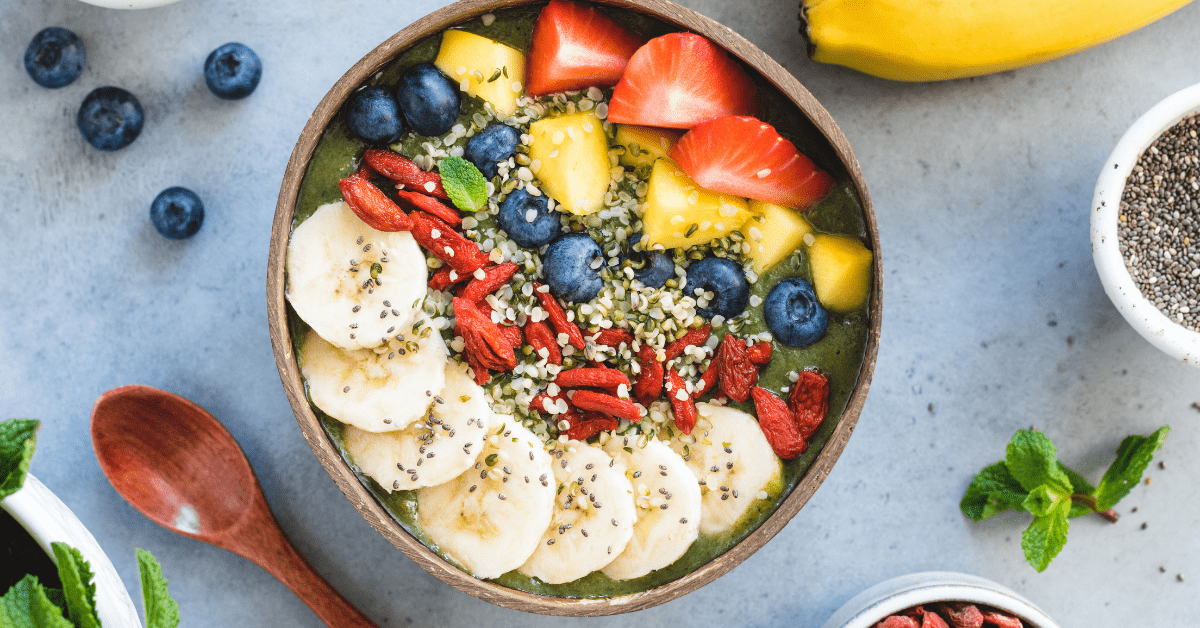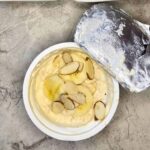Imagine a breakfast that’s not only delicious but also actively works to keep your blood sugar stable throughout the morning. Forget the energy crashes and mid-morning hunger pangs! This exploration dives into the vibrant world of sweet and savory breakfast bowls, revealing ingenious recipe combinations designed to nourish your body and delight your taste buds. We’ll uncover the secrets behind carefully chosen ingredients, mastering techniques for visually stunning presentations, and adapting recipes to suit various dietary needs, all while prioritizing blood sugar balance.
We’ll journey through a collection of five unique breakfast bowl recipes, each a carefully orchestrated symphony of flavors and textures. From the rich, earthy depths of savory components to the bright, uplifting sweetness of carefully selected fruits and spices, each bowl is a testament to the power of culinary balance. We’ll meticulously detail the preparation of one recipe, guiding you through each step with vivid descriptions and helpful tips. Discover how the strategic inclusion of fiber, protein, and healthy fats contributes to sustained energy and stable blood sugar levels. Learn to leverage the visual appeal of your creations, transforming simple bowls into Instagram-worthy masterpieces that tantalize the senses. Finally, we’ll explore how to adapt these recipes to accommodate various dietary needs, ensuring everyone can enjoy the benefits of these blood sugar-balancing breakfasts.
Step-by-Step Recipe: Berry Almond Quinoa Breakfast Bowl
This recipe focuses on creating a balanced breakfast bowl packed with protein, fiber, and healthy fats to help stabilize blood sugar levels throughout the morning. The combination of quinoa, berries, and almonds provides a delightful mix of sweet and savory flavors, creating a satisfying and nutritious meal. Each step is designed for easy replication, even for beginner cooks.
Ingredient Measurement and Preparation
Precise measurement is key to achieving the desired texture and flavor balance in this recipe. Begin by measuring out ½ cup of quinoa using a standard measuring cup. The quinoa should appear as a fluffy, off-white grain, filling the cup to the designated line. Next, measure 1 cup of water using the same measuring cup. The water should be clear and fill the cup to the brim. Add the quinoa and water to a small saucepan. Imagine the water gently covering the quinoa grains, creating a slight mound above the surface. Then, measure ¼ cup of sliced almonds in a separate bowl. These almonds should be evenly sliced and appear light beige to golden brown. Finally, prepare 1 cup of mixed berries – a vibrant blend of red raspberries, deep purple blueberries, and possibly a few juicy strawberries, showcasing a colorful array of textures and sizes.
Cooking the Quinoa
Bring the quinoa and water mixture to a boil over medium-high heat. The water will initially appear still, then begin to bubble vigorously as it heats. Once boiling, reduce the heat to low, cover the saucepan with a lid, and simmer for 15 minutes. The steam escaping from under the lid indicates the cooking process. After 15 minutes, remove the saucepan from the heat and let it sit, covered, for another 5 minutes. The quinoa will have absorbed most of the water, and the grains will appear plump and fluffy, a soft, pearly white. Fluff the quinoa with a fork, creating a light and airy texture. Imagine a cloud of cooked quinoa, ready to be combined with the other ingredients.
Assembling the Bowl
Divide the cooked quinoa into two bowls. The quinoa will be light and fluffy, forming a soft, even layer at the bottom of each bowl. Sprinkle ¼ cup of sliced almonds over each portion of quinoa. The almonds add a subtle crunch and a nutty aroma to the bowl. Top with ½ cup of mixed berries per bowl. The berries will add a splash of color and juicy sweetness, contrasting beautifully with the creamy quinoa and crunchy almonds. A visual feast of colors and textures is created: the creamy white of the quinoa, the golden brown of the almonds, and the vibrant hues of the berries.
Tips and Variations
For a richer flavor, consider toasting the almonds in a dry pan before adding them to the bowl. The toasted almonds will have a deeper, more intense flavor and a slightly darker, richer color. Feel free to substitute other nuts or seeds, such as walnuts, pecans, or pumpkin seeds. The texture and flavor profile will vary, adding another dimension to the bowl. You can also adjust the amount of berries based on your preference. If you prefer a less sweet bowl, reduce the amount of berries. Adding a drizzle of honey or maple syrup can enhance the sweetness, but remember to consider its impact on blood sugar levels. Alternatively, a sprinkle of cinnamon adds a warm, comforting spice note.
Blood Sugar Balancing Ingredients
Maintaining stable blood sugar levels is crucial for sustained energy and overall well-being. Breakfast, the first meal of the day, presents a unique opportunity to set the stage for balanced blood sugar throughout the morning. Strategic ingredient selection plays a pivotal role in achieving this goal. By incorporating foods rich in fiber, protein, and healthy fats, we can create breakfast bowls that promote gradual digestion and prevent blood sugar spikes and crashes.
The glycemic index (GI) provides a valuable framework for understanding how different foods affect blood sugar. Foods with a low GI (generally below 55) are digested and absorbed more slowly, resulting in a gentler rise in blood sugar. Conversely, high-GI foods (generally above 70) lead to rapid increases in blood sugar levels. Understanding the GI of common breakfast ingredients allows for mindful meal construction.
Fiber’s Role in Blood Sugar Regulation
Fiber, a type of carbohydrate the body cannot digest, plays a crucial role in slowing down the absorption of sugars into the bloodstream. Soluble fiber, found in foods like oats and berries, forms a gel-like substance in the digestive tract, further delaying glucose absorption. Insoluble fiber, present in foods like nuts and seeds, adds bulk to the stool, promoting regularity and overall digestive health. Both types contribute to a more gradual and sustained release of glucose, preventing sharp spikes in blood sugar. A breakfast bowl rich in fiber, such as one incorporating quinoa and berries, offers a significant advantage in blood sugar control.
Protein’s Impact on Blood Sugar Control
Protein, unlike carbohydrates, does not directly raise blood sugar levels. Instead, it promotes satiety, helping to prevent overeating and subsequent blood sugar fluctuations. Protein also slows down gastric emptying, further contributing to a more gradual release of glucose from carbohydrates consumed alongside it. Including protein sources like nuts, seeds, or Greek yogurt in your breakfast bowl helps to stabilize blood sugar and prevent energy crashes. Imagine a bowl with a handful of almonds and a dollop of Greek yogurt alongside the quinoa and berries; the protein content significantly improves the overall blood sugar response.
Healthy Fats: Moderating Blood Sugar Response
Healthy fats, such as those found in nuts, seeds, and avocado, also contribute to blood sugar regulation. They help to slow down digestion, promoting a feeling of fullness and preventing overconsumption of carbohydrates. Moreover, healthy fats are essential for hormone production and overall metabolic function, indirectly supporting balanced blood sugar levels. The creamy texture and subtle flavor of a small amount of avocado or a sprinkle of chia seeds in your breakfast bowl not only add nutritional value but also contribute to a more stable blood sugar response throughout the morning.
Glycemic Index Comparison of Common Breakfast Bowl Ingredients
A comparative analysis of the glycemic index (GI) of common breakfast bowl ingredients helps in understanding their impact on blood sugar. While precise GI values can vary based on preparation methods, a general comparison provides useful insights. For instance, quinoa typically has a moderate GI, while berries generally have a low GI. On the other hand, refined grains, such as white bread or sugary cereals, have a high GI. This understanding allows for strategic ingredient selection to create a breakfast bowl that promotes balanced blood sugar. A table visualizing the GI of common ingredients would clearly demonstrate this concept. For example:
| Ingredient | Approximate Glycemic Index (GI) |
|---|---|
| Quinoa | 52-68 (varies with preparation) |
| Berries (strawberries, blueberries, raspberries) | 25-40 (generally low) |
| Almonds | Low (not applicable; not a carbohydrate) |
| White Bread | 70-75 (high) |
| Sugary Cereal | 75-90 (very high) |
Visual Appeal and Presentation

A visually appealing breakfast bowl elevates the entire eating experience, transforming a simple meal into a sensory delight. The careful arrangement of colors, textures, and components not only enhances appetite but also contributes to a more satisfying and memorable breakfast. Consider the bowl itself as a canvas, and each ingredient as a brushstroke, creating a masterpiece of flavor and aesthetics.
Bowl Design: Three Visually Appealing Presentations
Three distinct approaches can be used to create visually stunning breakfast bowls. The first emphasizes vibrant color contrasts, the second focuses on textural interplay, and the third highlights a harmonious, minimalist aesthetic.
Presentation 1: Vibrant Color Contrast: Imagine a deep cobalt blue bowl brimming with a medley of colors. A bed of ruby-red raspberries and bright-yellow mango chunks forms the base. Emerald green spinach adds a fresh pop of color, while a sprinkle of toasted slivered almonds provides a creamy off-white contrast. A drizzle of golden honey adds a final touch of glistening sweetness, visually separating the components and guiding the eye through the arrangement. The interplay of warm and cool tones creates a dynamic and energetic presentation.
Presentation 2: Textural Interplay: This presentation prioritizes a diverse range of textures. A rustic, terracotta-colored bowl is the perfect backdrop for a layered composition. The base consists of fluffy quinoa, offering a soft, yielding texture. Crunchy toasted pecans and the satisfying chewiness of dried cranberries add contrasting elements. A dollop of creamy Greek yogurt provides a smooth, cool counterpoint. The contrasting textures invite exploration and add a delightful element of surprise with each bite.
Presentation 3: Minimalist Harmony: This approach focuses on simplicity and elegance. A sleek, white bowl showcases a refined arrangement. A base of creamy oat milk chia pudding serves as a neutral backdrop. A scattering of fresh blueberries and a few thinly sliced strawberries provides pops of color. A delicate sprinkle of chia seeds adds a subtle textural element. The overall effect is clean, sophisticated, and visually calming.
Tips for Creating Visually Stunning Breakfast Bowls
Several techniques can elevate your breakfast bowl presentations to an Instagram-worthy level.
Consider using a variety of heights and shapes to create visual interest. Layer ingredients strategically, building from a base to a peak. This creates depth and dimension, making the bowl more visually appealing. Garnishes play a crucial role. Fresh herbs, edible flowers, a sprinkle of nuts, or a drizzle of sauce can transform a simple bowl into a work of art. For example, a sprig of mint adds a pop of freshness and color, while a drizzle of balsamic glaze provides a sophisticated touch and adds a visual separation between components. Plating techniques, such as using a spoon to create swirls or carefully arranging ingredients in a radial pattern, can enhance the overall aesthetic.
Importance of Visual Presentation in Enhancing the Breakfast Experience
The visual appeal of food significantly impacts our perception of taste and enjoyment. A beautifully presented breakfast bowl stimulates the appetite and enhances the overall sensory experience. The colors, textures, and arrangement of ingredients create an expectation of deliciousness, making the meal more enjoyable and memorable. A visually appealing breakfast starts the day on a positive and satisfying note, setting a tone of mindful eating and appreciation for the food. It’s a small detail that can make a big difference in both our enjoyment of the meal and our overall well-being.
Recipe Variations and Adaptations
This section explores three variations of the Berry Almond Quinoa Breakfast Bowl recipe, each tailored to specific dietary needs while maintaining the crucial balance of sweet and savory flavors and blood sugar stability. The core principles of incorporating both slow-digesting carbohydrates and protein remain consistent across all adaptations. We’ll examine how simple ingredient swaps can accommodate various restrictions without compromising the overall nutritional profile and deliciousness.
Vegan Berry Almond Quinoa Breakfast Bowl
This adaptation eliminates all animal products, ensuring a completely plant-based breakfast bowl. The richness and creaminess are achieved through clever substitutions.
- Ingredients: 1 cup cooked quinoa, ½ cup mixed berries (fresh or frozen), ¼ cup slivered almonds, 2 tablespoons maple syrup, 1 tablespoon chia seeds, 1 teaspoon vanilla extract, ½ teaspoon cinnamon, ¼ cup plant-based milk (almond, soy, or oat), 1 tablespoon nutritional yeast (for cheesy flavor).
- Instructions: Combine cooked quinoa, berries, almonds, maple syrup, chia seeds, vanilla extract, and cinnamon in a bowl. Drizzle with plant-based milk and sprinkle with nutritional yeast. The nutritional yeast provides a savory, cheesy note that complements the sweetness of the berries and maple syrup.
- Blood Sugar Balance: The quinoa provides sustained energy release, while the protein from the chia seeds and almonds helps prevent blood sugar spikes. The berries offer natural sweetness without the rapid rise in blood sugar associated with refined sugars.
Gluten-Free Berry Almond Quinoa Breakfast Bowl
This variation ensures the bowl is suitable for those with gluten sensitivities or celiac disease. The focus is on ensuring all ingredients are naturally gluten-free.
- Ingredients: 1 cup cooked quinoa (ensure certified gluten-free if needed), ½ cup mixed berries (fresh or frozen), ¼ cup slivered almonds, 2 tablespoons maple syrup, 1 tablespoon chia seeds, 1 teaspoon vanilla extract, ½ teaspoon cinnamon, ¼ cup unsweetened almond milk (or other gluten-free milk), 1 tablespoon gluten-free granola (optional, check label for gluten-free certification).
- Instructions: Follow the instructions for the original recipe, substituting the specified ingredients. If using gluten-free granola, add it as a topping for added crunch and texture.
- Blood Sugar Balance: The recipe maintains its blood sugar-balancing properties by retaining the core ingredients: quinoa, berries, and almonds. The use of gluten-free alternatives doesn’t affect the overall macronutrient profile or the slow-release carbohydrate and protein balance.
Dairy-Free Berry Almond Quinoa Breakfast Bowl
This version removes all dairy products, making it suitable for those with lactose intolerance or dairy allergies. The creaminess and richness are maintained using alternative ingredients.
- Ingredients: 1 cup cooked quinoa, ½ cup mixed berries (fresh or frozen), ¼ cup slivered almonds, 2 tablespoons maple syrup, 1 tablespoon chia seeds, 1 teaspoon vanilla extract, ½ teaspoon cinnamon, ¼ cup unsweetened almond milk (or other dairy-free milk), 1 tablespoon coconut flakes (optional, for added texture and subtle sweetness).
- Instructions: Prepare as per the original recipe, substituting dairy-free milk. The coconut flakes add a slightly sweet and textural element that can replace the creaminess that might be lost by removing dairy.
- Blood Sugar Balance: This dairy-free adaptation maintains the balance by preserving the primary components contributing to blood sugar regulation: quinoa, berries, and almonds. The substitution of almond milk for dairy milk doesn’t significantly alter the nutritional profile or the glycemic index of the dish.
Unlocking the secret to a satisfying and blood-sugar-friendly breakfast is easier than you might think. By understanding the interplay of ingredients and mastering a few simple techniques, you can create a daily ritual that fuels your body and delights your senses. The journey through sweet and savory breakfast bowls has unveiled not just delicious recipes but also a deeper appreciation for the power of mindful eating and its impact on overall well-being. Remember, a balanced breakfast is more than just fuel; it’s the foundation for a day filled with energy, focus, and a sense of well-being. So, grab your bowls, gather your ingredients, and embark on this delicious adventure toward a healthier, happier you!
Q&A
Can I prepare these bowls the night before?
Many of these bowls can be prepped ahead! Store components separately (e.g., granola, fruit, yogurt) and assemble in the morning to maintain freshness and optimal texture.
What if I don’t like certain ingredients?
Feel free to substitute ingredients based on your preferences and dietary needs. The recipes provide guidance, but creativity is encouraged!
How long will these bowls stay fresh?
Assembled bowls are best enjoyed fresh. However, components can be stored separately in the refrigerator for 1-2 days.
Are these bowls suitable for weight loss?
Yes, the balanced combination of macronutrients can promote satiety and support weight management goals.


